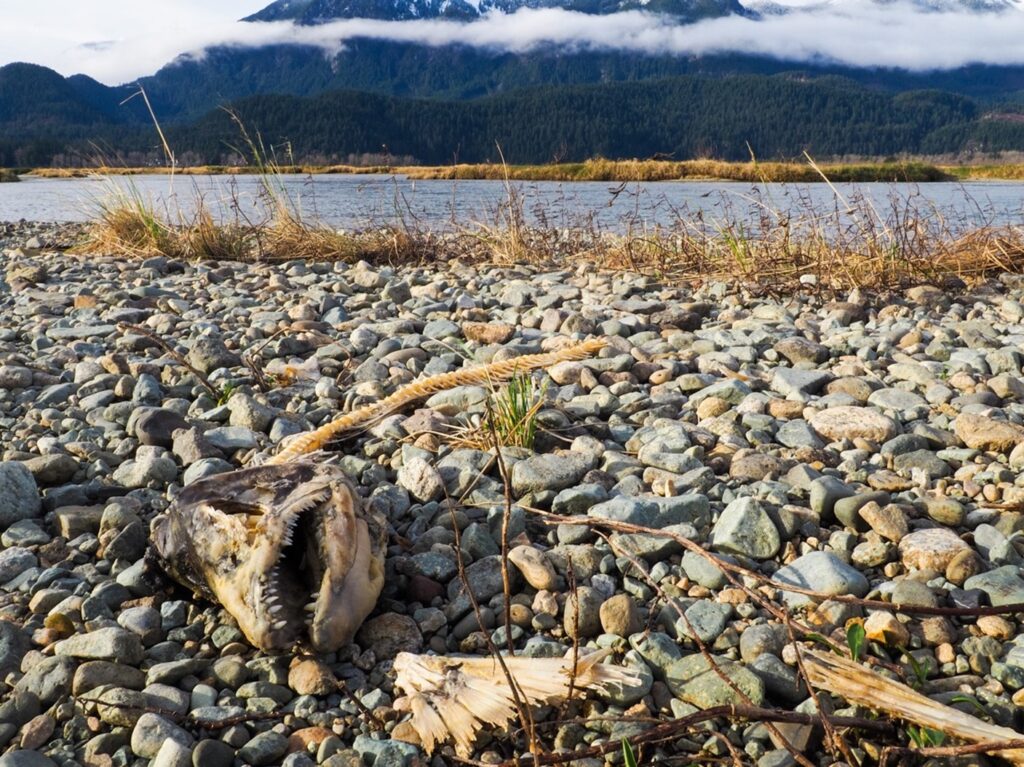By Emily Spavor

After a summer of record heat and drought, climate change still isn’t the most immediate threat to the Fraser River, one of the greatest salmon bearing watersheds in the world. People are.
Human caused habitat destruction from development, agriculture and off-roading vehicles on delicate gravel bar areas and on islands close to the river is harming the ecosystem that supports the life of salmon, experts say.
Dr. Ken Ashley, director of the BCIT Rivers Institute, says climate change is an overarching issue that isn’t going to see a change for 50 to 100 years, which will be too late for salmon. But there are important changes we can make now to help reverse salmon decline.
“In streams and lakes where humans tend to have the biggest impact, we cut the forests down, we dam the rivers, we build on top of their habitat, and so, protecting their freshwater habitat is the thing that the government and society can do most quickly and most effectively in the short term in order to buy time to eventually fix the carbon problem,” says Ashley.
One person who has been working to protect Pacific Salmon and advocating for the conservation of their freshwater habitat for 52 years is Dean Werk, president of the Fraser Valley Salmon Society. He is the Vice-president of the Stó:lö Business Association and one of the only Indigenous sport fishing company operators on the Fraser.
The area of the Fraser River from the Mission Bridge to Hope referred to as the Heart of the Fraser is the most delicate and vital ecosystem for the rearing and holding of Pacific Salmon in the over 1400-kilometre length of the river, says Werk.
All five salmon species are found in the Heart of the Fraser and advocates in the area are fighting for the conservation of their natural habitat.
The islands and gravel bars along the Heart of the Fraser are integral to the survival of Pacific Salmon and many of the islands are being sold to the general public and stripped of their natural wood, trees and debris for agriculture, says Werk.
“These islands need to be protected, because these islands are critical for the future of our fish,” says Werk.
Dr. Marvin Rosenau, an instructor in the Fish and Wildlife Program at BCIT, says general habitat destruction is the biggest threat to salmon survival. He formerly worked with the International Pacific Salmon Fisheries Commission, and the provincial Ministry of Environment, Lands and Parks on salmon conservation.
The Fraser River Chum Salmon run is at an all-time low again. This salmon season is already seeing early fisheries closures, but they won’t have all the data until after the season ends in November, says Ashely.
It is the responsibility of the Department of Oceans and Fisheries to protect this region, however, they have been criticized for lack of action, says Werk.
The survival of salmon in the Fraser depends on the guidance and protection of the federal government, and in June 2021, the federal government allocated a $647 million investment over five years to save wild B.C. salmon called the Pacific Salmon Strategy Initiative.
The Department of Oceans and Fisheries was contacted and declined an interview at this time.
This article was written as part of JRNL 4250, a senior class about politics and journalism. Climate change was one political issue reported on by the students, as part of the Climate+ Challenge.